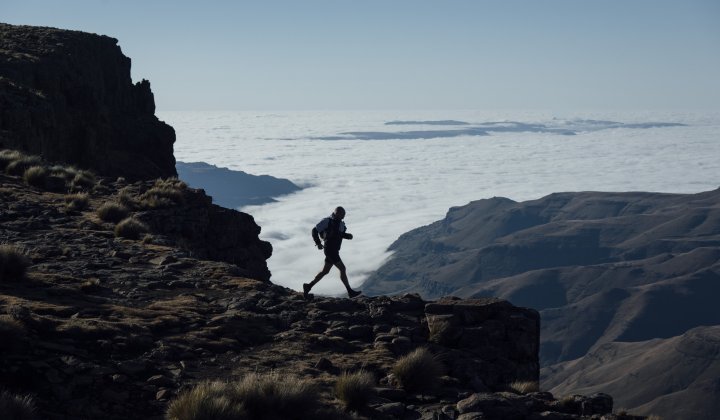It feels as if Mother Nature is out to prove a point and hitting humanity where it hurts most – the bottom line. But the shift of climate change awareness is moving from eco-warriors to industries as they witness the devastating impact it now has on global business.
If you’re reading this with a cup of coffee in hand, you might have noticed that the price of coffee has been increasing. If not, you certainly will in the next year or two because Brazil was hit by the worst frost in two decades this winter. This devastates young coffee trees, and it’s likely that the crops, even two years from now, will be compromised.
Brazil is the world’s largest coffee grower and accounts for 40% of the world’s harvest of arabica coffee beans. When the frost hit, the price of Brazilian coffee beans surged by 17%. Brazil is also the world’s main supplier of sugar and orange juice and is a key producer of maize and soybeans. The pandemic laid bare just how interconnected and fragile the world’s supply chains are. Now, climate change is reinforcing the message.
The long-term effect of climate change is starting to show. For example, from the UN’s Food and Agriculture Organisation (which measures international prices of a basket of food), the Food Price Index has risen for 12 consecutive months and is up 34% from the previous year.
While global supply chains are still recovering from the disruption caused by the pandemic, extreme weather is adding new complications.
Not only are crops being destroyed – by extreme heat, droughts, frost or floods – but crops that have been harvested are also not reaching their markets because of extreme weather. For example, the wildfires in British Columbia were so widespread and destructive that rail cars carrying grain for export were unable to move for weeks.
But it is not just this year’s crops we have to worry about. The impact of climate change is starting to affect the historical appellation of certain products, like the famed wine, Châteauneuf-du-Pape, from the Rhône region in France. Warmer weather creates sweeter grapes, which in turn produces a higher alcohol content and simultaneously a loss of acidity. Harvest dates have also been brought forward. These seemingly small changes drastically affect the delicate balances these wines are famous for. Ongoing changes are therefore disastrous for the region and its appellation.
Chief heat officers
In May this year, a new title was added to the C-suite lexicon: a chief heat officer (CHO). So far, three cities on the planet have appointed a CHO. Miami (USA) was the first city to appoint one, followed by Athens (Greece) and then Freetown (Sierra Leone).
The idea to create the role of a CHO was seeded by the Adrienne Arsht-Rockefeller Foundation Resilience Centre, a non-profit organisation that works with cities globally to fund climate-resilience solutions. One of the foundation’s arms, the Extreme Heat Resilience Alliance programme, helps fund this position.
The Extreme Heat Resilience Alliance works with 30 global partners and brings together experts in public health, finance, humanitarian assistance, disaster management, climate science and risk, insurance and public infrastructure to mitigate the growing threat of extreme urban heat for vulnerable people.
The impact on infrastructure
While the impact of climate change on the natural world (shellfish and molluscs were boiled to death in Vancouver bay and snails cooked to death in Sicily) and the direct consequences for agriculture are obvious, the less obvious chains of cause and effect are starting to unfold.
When the heat dome scorched the Pacific Northwest region in June, the unexpected consequences of extreme heat emerged. Roads became inaccessible because the tar either buckled or started to crack. Meanwhile, public transport systems, like trams, could not operate because power cables and tramlines had overheated or were simply warping.
At the other extreme, the snowstorm that engulfed Texas in February disrupted supply chains because roads and driving conditions became unsafe, but power outages caused by the freezing conditions created the most chaos. Besides the devastating knock-on effect for the global automotive industry, food supply chains were broken. Grocery retailers could not receive dairy products, while farmers were dumping milk because processing plants did not have power.
Climate literacy, a new CSR?
In partnership with the World Wildlife Fund, Deloitte is the first global company to embark on a climate literacy programme for all of its 330,000 employees. The company already works with their clients on sustainability strategies, but the launch of this new digital programme will provide its workforce with an understanding of how they can help address climate change, not only when they interact with clients but also in their personal lives.
A survey in America revealed that while more and more people agreed that climate change was a looming crisis, many did not understand what was causing it or thought they couldn’t do anything about it.
The Impact on tourism
The pandemic has devastated the tourism industry, but now climate change is adding to the problem. Global warming is lengthening the summer period but making beach resorts unbearably hot and shortening ski seasons in winter. In addition, violent storms and rising sea levels are eroding beaches, while water scarcity (as Cape Town experienced in 2018) is becoming a deterrent for travellers.
If ever there was a bellwether linking climate change to tourism, then the Cool Walks app developed by the Barcelona municipality stands out. The app is designed to show walking routes that have the most shade. Users can choose the most direct route, a route with shade that takes a little longer, or “vampire mode”, which avoids direct sunlight at all costs. The app also pinpoints water fountains or places to shelter from the sun.
For the heat-phobic, there is also a weather app called Carrot that provides a “wet bulb” reading: a measurement of temperature and humidity which, at a certain level, the human body loses the ability to cool itself and potentially shuts down. So, in essence, the app will warn you if you’re about to drop dead.
Extreme temperatures now kill, on average, 5 million people globally every year. Best you download the app immediately.
Melting permafrost
A major concern for climate scientists is thawing permafrost. Permafrost is the layer of permanently frozen soil that stretches under 65% of Russia’s landmass and almost a quarter of the northern hemisphere.
A gradual thawing of permafrost has started over the past few years, but the problem is accelerating. Extreme weather, in the form of heatwaves, has thawed and dried large tracks of usually cold, wet and icy ground, enough to spark a rash of wildfires. In turn, these fires are speeding up the thawing process.
Permafrost contains long-frozen microbes, which are now being released. The microbes eat the thawed decaying matter releasing carbon dioxide and methane, which adds to global warming. There is one and a half times more carbon trapped in permafrost than there is currently in our atmosphere.
Perhaps more worrying is the fact that microbes containing diseases are being released from thawing permafrost. For example, in 2016, an outbreak of anthrax in the region was traced to a 75-year-old reindeer carcass after it had defrosted. Amid a global pandemic, this is, understandably, setting off alarm bells.
Dion Chang is the founder of Flux Trends.




